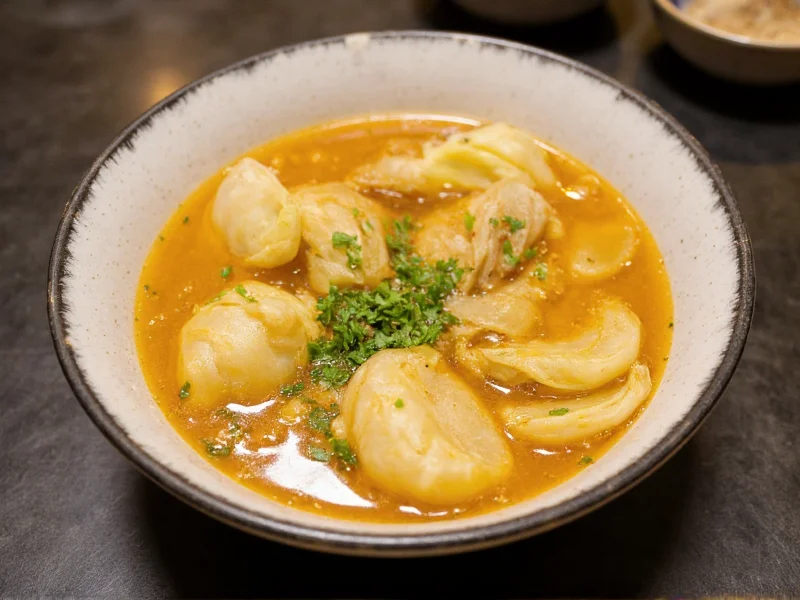The best cabbage soup recipe combines 1 small head of green cabbage, 1 onion, 2 carrots, 3 celery stalks, 4 cups vegetable broth, 2 cloves garlic, 1 can diced tomatoes, 1 tsp thyme, and salt and pepper to taste. Sauté vegetables for 5 minutes, add broth and tomatoes, simmer for 30-40 minutes until cabbage is tender. This simple, nutritious soup serves 4-6 and can be customized with protein additions or dietary modifications.
Nothing beats a warm bowl of homemade cabbage soup on a chilly day. This humble vegetable transforms into something extraordinary when simmered in broth with complementary ingredients. Cabbage soup has been a kitchen staple across cultures for centuries—from Eastern European borscht variations to Korean kimchi jjigae foundations. The beauty of cabbage in soup recipes lies in its versatility, affordability, and nutritional profile. Whether you're looking for a light lunch option, a hearty dinner solution, or a way to use up that half-head of cabbage languishing in your crisper drawer, this guide delivers everything you need for soup success.
Why Cabbage Excels in Soup Recipes
Cabbage brings unique qualities to soup that few vegetables can match. Its high water content (92%) helps create broth naturally while its firm structure holds up during cooking. Unlike delicate greens that wilt immediately, cabbage maintains texture through extended simmering. The vegetable's mild sweetness balances acidic ingredients like tomatoes, while its natural sulfur compounds develop complex umami flavors when cooked. Green cabbage offers the most neutral flavor for traditional cabbage soup recipes, though savoy cabbage provides more tender leaves and red cabbage adds visual appeal and anthocyanins.
Essential Ingredients for Perfect Cabbage Soup
While regional variations abound, these components form the foundation of any reliable cabbage in soup recipe:
| Ingredient | Amount | Preparation Tips |
|---|---|---|
| Green cabbage | 1 small head (about 2 lbs) | Remove outer leaves, quarter, remove core, slice thinly |
| Yellow onion | 1 medium | Diced small for even cooking |
| Carrots | 2 medium | Peeled and sliced ¼ inch thick |
| Celery | 3 stalks | Include leaves for extra flavor |
| Garlic | 2-3 cloves | Minced finely |
| Vegetable broth | 4 cups | Low-sodium preferred |
| Diced tomatoes | 1 (14.5 oz) can | With juices |
Step-by-Step Cabbage Soup Preparation
Follow these professional kitchen techniques for foolproof cabbage soup every time:
- Sauté aromatics: Heat 1 tbsp olive oil in a 4-6 quart pot over medium heat. Add onions, carrots, and celery. Cook 5-7 minutes until softened but not browned.
- Add garlic: Stir in minced garlic and cook 30 seconds until fragrant—don't let it burn.
- Incorporate cabbage: Add sliced cabbage and ½ tsp salt. Stir to combine, cooking 5 minutes until cabbage begins to wilt.
- Add liquids: Pour in broth and diced tomatoes with their juices. Add 1 tsp dried thyme (or 1 tbsp fresh).
- Simmer: Bring to a gentle boil, then reduce heat to low. Cover and simmer 30-40 minutes until cabbage reaches desired tenderness.
- Season: Adjust salt and pepper to taste. For brightness, add 1 tbsp lemon juice or apple cider vinegar before serving.
Avoiding Common Cabbage Soup Mistakes
Even experienced cooks encounter pitfalls with cabbage soup recipes. Here's how to avoid them:
- Overcooking cabbage: While cabbage needs time to soften, boiling too vigorously breaks it down into mush. Maintain a gentle simmer after the initial boil.
- Underseasoning: Cabbage requires more salt than many vegetables to bring out its natural sweetness. Season in layers—when sautéing vegetables and again at the end.
- Skipping the sweat step: Properly sweating onions and carrots (cooking until softened but not browned) builds flavor foundation. Rushing this step results in flat-tasting soup.
- Adding cabbage too late: Unlike delicate greens, cabbage needs substantial cooking time to mellow its sulfur compounds. Add it early in the process.
Delicious Variations for Your Cabbage Soup Recipe
Once you've mastered the basic cabbage soup recipe, experiment with these adaptations:
- Protein-packed version: Add 1 cup cooked white beans or 8 oz diced turkey sausage during the last 15 minutes of cooking
- Eastern European style: Include 1 tbsp caraway seeds and 2 diced potatoes with the broth
- Keto-friendly option: Replace carrots with additional celery and add ½ cup heavy cream at the end
- Spicy twist: Stir in ½ tsp red pepper flakes with the garlic
- German-inspired: Add 4 oz chopped smoked ham hock and 1 bay leaf
Storage and Reheating Best Practices
Cabbage soup actually improves in flavor after sitting, making it perfect for meal prep. Follow these storage guidelines:
- Cool completely before storing (within 2 hours of cooking)
- Store in airtight containers for up to 5 days in the refrigerator
- Freeze portions in freezer-safe containers for up to 3 months
- Reheat gently on stove over medium-low heat—avoid boiling which can make cabbage tough
- When reheating frozen soup, thaw overnight in refrigerator first for best texture
Nutritional Benefits of Cabbage Soup
One cup of this basic cabbage soup recipe contains approximately:
- 90 calories
- 3g protein
- 18g carbohydrates
- 4g fiber (16% of daily value)
- High in vitamins C and K
- Contains glucosinolates with potential anti-inflammatory properties
The fiber content promotes satiety, making this an excellent choice for weight management. Unlike restrictive cabbage soup diet fads, this balanced recipe provides sustained nutrition while delivering that comforting bowl of goodness.
Perfect Pairings for Cabbage Soup
Elevate your cabbage soup experience with these complementary sides:
- Crusty whole-grain bread for dipping
- Simple green salad with lemon vinaigrette
- Roasted root vegetables
- Plain Greek yogurt for dolloping
- Hard-boiled eggs for added protein











 浙公网安备
33010002000092号
浙公网安备
33010002000092号 浙B2-20120091-4
浙B2-20120091-4